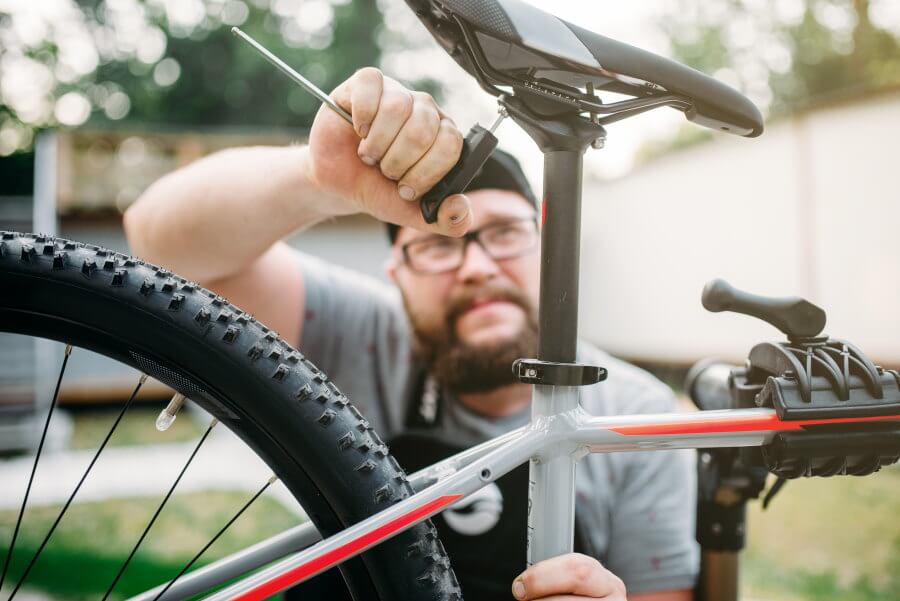Choosing a good seat is as complicated as choosing an indoor cycling bike because there is seat that would fit all users comfortably. Most people prefer to change their bike seats because the saddle they get with their bike is not comfortable for their style of riding and body structure. Apart from that, the seat may be worn out due to the continuous use of the bike for cardiovascular exercise and other activities. Throw away your old seat and buy a new one.
If you have decided to change your bike saddle, get ready for the hassle because selecting a new seat for the bike is one of the trickiest tasks. Every cyclist has specific standards to choose a seat for an indoor bike. Whenever a beginner starts indoor cycling, they are concerned about comfort more than anything.
Make sure to take a test ride with your new seat while purchasing it from a cycling store. If your bike saddle is not appropriate, this article will guide you on how you can pick the right seat for your indoor bicycle.
Deciding the right seat with cushioning
Before selecting a bike seat, decide what sort of padding you want in your seat.
Performance seat: This seat is long and narrow in shape, and it has a low amount of padding. The performance seat provides more pressure while paddling.
Cushioning seat: This seat contains more padding inside and is suitable to ride in comfort, and your hips won’t hurt. You can put these seats on your indoor and recreational bikes.
Decide if you need a center cutout
Between your sit bones, the perineum is an area containing nerves and arteries. Seats with center cutouts are chiefly designed to avoid discomfort. Such seats with a hollow center provide aeration. Some people use a seat with a perineal cutout, while others prefer a slight indentation or no accommodation while picking a suitable seat for their bike. People choose what they feel fits for them, depending on their body shape.
Decide a material for the seat
Cycling companies make seats of various materials, including leather, cotton and synthetic. Factors like cost, material quality and comfort, flex, and weight are kept in mind before purchasing the fitting seat for the indoor bike. Following are the materials used to make indoor cycling bike seats around the world:
Synthetic
Synthetic is the most popular material in the world. The majority of the companies rely on this lightweight material to produce top-quality bike seats. Synthetic seats have been the first choice for a long time because it is low maintenance and needs no break-in time.
Cotton
Cotton is not widely regarded as a seat-making material. However, the covers of bike seats are made of cotton. Break-in time for cotton is far less than that of leather. Seats with cotton coverings provide excellent control over pedaling.
Leather
Leather seats are reliable because they can survive for a longer period. A few seats have a patch of leather in the covering, while others are completely made of this tremendous material. Leather has a break-in period of 200 miles, and after that, it adapts to your weight and shape. Leather is not water-resistant, so read the instructions carefully before using any leather conditioner or other materials.
Decide on a padding material
Two major types of materials are used for padding purposes.
Gel padding
Gel padding is flexible and molds to your body to offer a comfortable riding experience. The gel becomes compact quickly than foam padding. If you are looking for superior comfort, this padding material is best for you.
Foam padding
Foam padding provides a flexible feel and springs back to the original shape. This kind of cushioning is to offer support during an enjoyable exercise class. Firm padding of foam is suitable for fat indoor bike riders and cyclists with well-conditioned sit bones as it will retain its form and won’t compact quickly.
Decide the rail material you want
Different indoor bike manufacturing companies use different solid materials to design the frames. Rail is the attachment point where the bike is connected with the seat, and many bikes possess two rails starting from the seat’s nose to the broader part on the back.
Steel: steel is an A-grade material to make rails, but it is heavier than any other material.
Alloy: Alloy is the mixture of two metals joined together to increase the strength and life of the resultant material. Chromoly is a lightweight rail-making material with unbreakable strength.
Titanium: This material is good to absorb bumps while riding an indoor or outdoor bike. The only problem with this material is its high cost. It is very strong and light.
Carbon: Carbon has similar features to titanium, and this material is available with costly seats.

